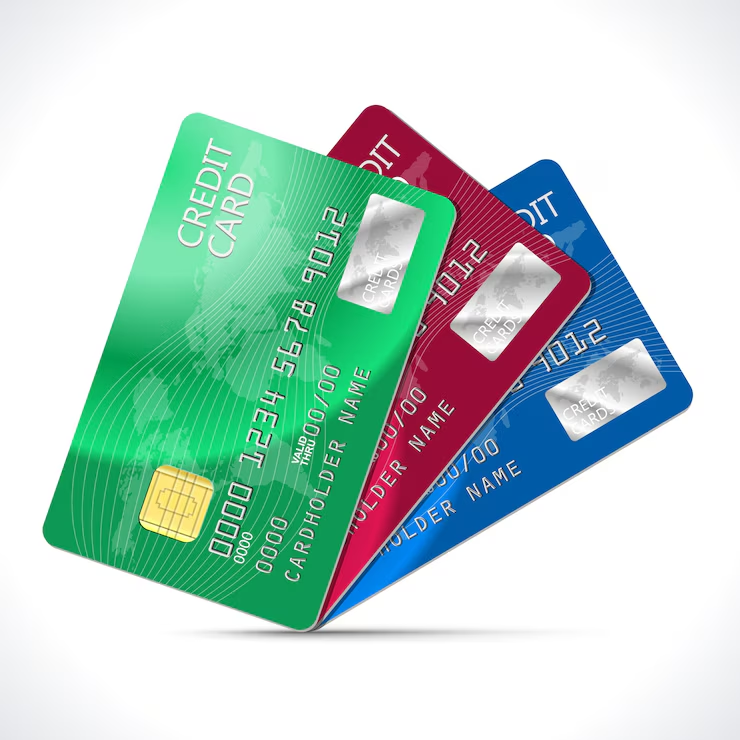
How to Use Credit Cards: A Smart Approach to Maximize Benefits and Avoid Pitfalls
Credit cards are powerful financial tools that, when used wisely, can bring immense benefits such as cashback rewards, travel perks, and an improved credit score. However, mismanaging them can lead to debt and financial stress. To help you navigate the world of credit cards responsibly, this guide will provide innovative strategies to maximize the advantages while staying clear of common mistakes.
1. Understand Your Credit Card Features

Before diving into credit card use, it’s essential to familiarize yourself with the card’s terms and features. Every card has its own unique set of benefits, such as:
- Rewards Programs: Cashback, points, or miles for each purchase.
- Interest Rates: Know your Annual Percentage Rate (APR) to avoid high-interest charges.
- Credit Limits: Stay below your limit to maintain a healthy credit utilization ratio.
- Fees: Keep an eye on costs like yearly membership fees, penalties for late payments, and charges for international transactions.
Having a clear understanding of these elements can help you make smarter decisions on which card to use for specific purchases.
2. Approach your credit card as if it were a debit card
One innovative approach to avoid overspending is to treat your credit card like a debit card. Instead of seeing it as borrowed money, consider it as part of your current funds. For every transaction, make sure you already have the cash in your checking account, and pay off the balance right away. This ensures you don’t overspend or accumulate interest charges, and it builds discipline in managing your finances.
3. Use Credit Cards to Build Credit, Not for Financing
While credit cards offer flexibility, they should not be viewed as long-term financing tools. Carrying a balance month to month leads to high-interest charges that can outweigh any rewards or benefits. Instead, use your card for everyday purchases you can pay off in full each billing cycle. This builds a positive payment history, which is a critical component of your credit score.
Additionally, keeping your credit utilization below 30% (preferably closer to 10%) can significantly boost your credit rating. For example, if your credit limit is $5,000, aim to keep your outstanding balance under $1,500.
4. Maximize Rewards by Strategic Spending
Credit cards often come with rewards or loyalty programs that allow you to earn cashback, points, or travel miles. To make the most of these rewards, use your card for regular, essential expenses like groceries, utilities, and gas. However, ensure these are purchases you can afford to pay off at the end of the month.
Another clever tactic is to combine credit card offers with store promotions or online cashback portals for extra savings. For example, using your card during promotional periods for higher reward rates can maximize your return.
5. Leverage Signup Bonuses and Introductory Offers
Many credit card companies offer attractive signup bonuses or introductory offers. These can include hefty cashback bonuses or thousands of reward points if you meet a specific spending requirement within the first few months. When used wisely, these bonuses can offer significant value, especially if you were already planning to make larger purchases like furniture or electronics.
However, it’s crucial to avoid unnecessary spending just to reach these spending thresholds. Only pursue bonuses if they align with your existing budget.
6. Take Advantage of 0% APR Offers – Wisely
Some credit cards offer a 0% APR period for purchases or balance transfers. This can be beneficial if you need to make a large purchase and want to spread out payments without accruing interest. However, make sure to pay off the balance before the promotional period ends, as the interest rates after the promotion can be steep.
Alternatively, transferring high-interest debt to a card with a 0% APR offer can save you money. But this only works if you are disciplined about making regular payments to pay off the balance during the interest-free period.
7. Set Up Automatic Payments
Missing payments can hurt your credit score and lead to expensive penalties. One innovative solution is to set up automatic payments for at least the minimum amount each month. This way, you never miss a payment and avoid penalties.
To further optimize this, schedule automatic payments to occur shortly after receiving your paycheck to ensure you have enough funds. If possible, pay more than the minimum to reduce your outstanding balance faster and avoid interest charges.
8. Monitor Your Spending with Technology
With the rise of fintech apps and digital banking tools, it’s easier than ever to keep track of your credit card spending. Use apps that categorize your expenses, notify you of due dates, and alert you when you’re nearing your credit limit. These tools can help you stay on top of your finances and avoid surprises at the end of the month.
Additionally, many credit cards come with their own apps that allow you to view your transactions in real-time, set up spending limits, and even freeze your card in case of suspicious activity.
9. Avoid Cash Advances
While credit cards offer cash advance options, they come with high fees and interest rates that start accumulating immediately. Steer clear of using your credit card for cash withdrawals unless it’s a true emergency. A better approach is to keep an emergency fund in your savings account that you can tap into when needed.
10. Review Your Statement Regularly
Finally, it’s important to review your credit card statement every month. Look for any unauthorized charges, mistakes, or unexpected fees. By catching errors early, you can report them and avoid financial loss. Reviewing your statement also helps you stay conscious of your spending habits, ensuring you stay within your budget.
Conclusion: Use Credit Cards as a Tool, Not a Crutch
Credit cards, when used responsibly, can be a valuable tool for building credit, earning rewards, and managing expenses. The key is to approach them with discipline and a strategic mindset. By understanding your card’s features, paying off balances in full, maximizing rewards, and avoiding common pitfalls, you can unlock the full potential of credit cards without falling into the debt trap.
Credit card usage isn’t just about spending—it’s about financial control. So, take charge, be mindful, and let your credit cards work for you.







